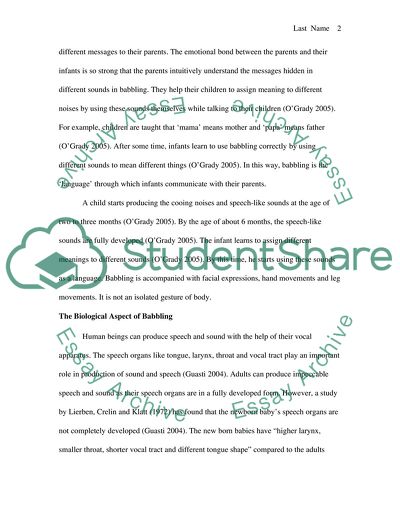Cite this document
(Different Aspects of Babbling Case Study Example | Topics and Well Written Essays - 2250 words, n.d.)
Different Aspects of Babbling Case Study Example | Topics and Well Written Essays - 2250 words. Retrieved from https://studentshare.org/psychology/1573193-is-babbling-a-part-of-language-acquisiton-or-is-it-simply-mouth-play
Different Aspects of Babbling Case Study Example | Topics and Well Written Essays - 2250 words. Retrieved from https://studentshare.org/psychology/1573193-is-babbling-a-part-of-language-acquisiton-or-is-it-simply-mouth-play
(Different Aspects of Babbling Case Study Example | Topics and Well Written Essays - 2250 Words)
Different Aspects of Babbling Case Study Example | Topics and Well Written Essays - 2250 Words. https://studentshare.org/psychology/1573193-is-babbling-a-part-of-language-acquisiton-or-is-it-simply-mouth-play.
Different Aspects of Babbling Case Study Example | Topics and Well Written Essays - 2250 Words. https://studentshare.org/psychology/1573193-is-babbling-a-part-of-language-acquisiton-or-is-it-simply-mouth-play.
“Different Aspects of Babbling Case Study Example | Topics and Well Written Essays - 2250 Words”. https://studentshare.org/psychology/1573193-is-babbling-a-part-of-language-acquisiton-or-is-it-simply-mouth-play.


